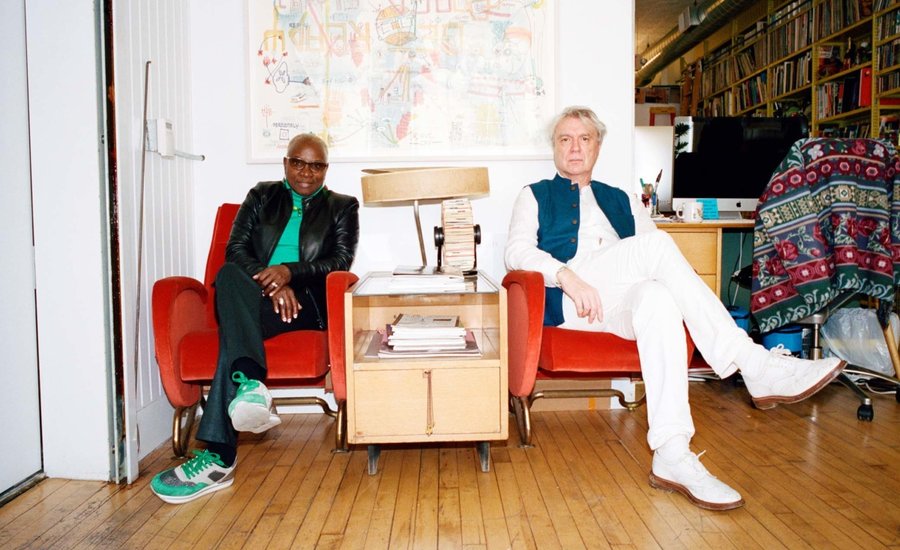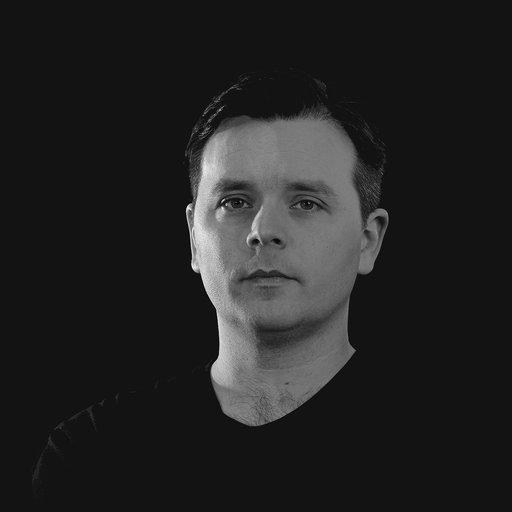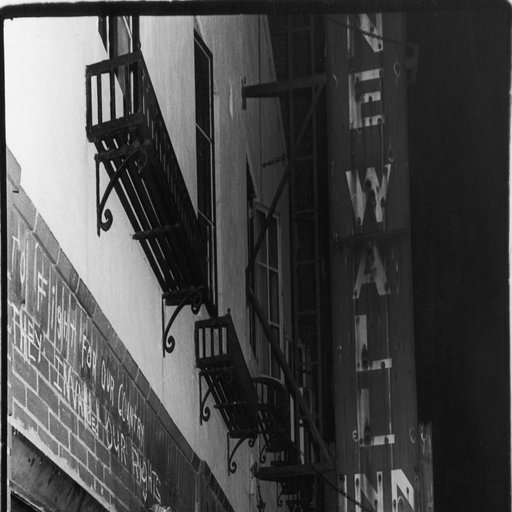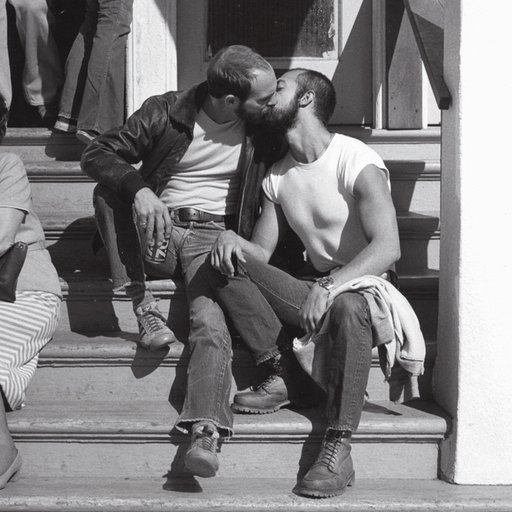This article was originally published in Cultured Magazine , authored by Sara Roffino.
Benin-born super-diva Angélique Kidjo and David Byrne , whose legendary career kicked off with his role as lead singer of the Talking Heads, have been friends for more than two decades, going to each other’s shows and even playing together a few times. Kidjo first heard the Talking Heads just a few months after she moved to Paris in the 1980s, but didn’t realize it was her friend’s voice that had stuck with her until a few years ago. That spark ignited her decision to remake the iconic album, remain in light—itself partly inspired by the African music Byrne was just discovering when he wrote it. The two met with Cultured’s executive editor, Sara Roffino, in Byrne’s Soho office, reminiscing about mutual friends, their musical histories and their shared love of the late cuban star Celia Cruz, who is paid homage on Kidjo’s most recent album.
Where are all these records from?
David Byrne: These are all original Celia Cruz records. Until she relocated to New York they were difficult to find. Some of these records are Cuban recordings that they would re-release in New York with no license. They were kind of like bootlegs because after the Cuban Revolution there was no communication, but people had the Cuban recordings here so they would just put them back out. This one was made in Mexico.
Angélique, you saw Celia perform when you were growing up in Benin and you’ve talked about what she meant to you as a person, but I’m wondering if you can talk about hearing the music and what that meant for you?
Angélique Kidjo: Salsa is huge in Africa; there is no party without salsa. If you want people to stay at your party you better play salsa, otherwise they leave. Growing up, all the African salsa bands, any bands that came, were all men—you never saw any girls in those bands. So I thought, if you want to play salsa you have to be a guy. And then here comes Celia. I told my girlfriends at school that there was a woman who sings salsa coming. They looked at me and said, “You’re still dreaming. There are no girls singing.” So we made a bet. If she was a backup singer, I had to do their homework for six months, but if she was the center they had to do my homework for six months. [ Laughter .] And of course when the show started, Johnny Pacheco was playing with the guys and then suddenly she burst on the stage, Azucar, and I’m like woah—start counting man, six months of homework. [ Laughter .]
DB: African college entry scandal. [ Laughter .]
AK: Exactly. I hate homework, especially math. That’s how I met Celia the first time. I wasn’t close to her, but she was like a comet that passed by. Benin is very conservative. Still today, people are very conservative and it’s very hard to get them to dance. But when Celia came in, everyone was dancing. And I was like, that is what I want to do, I want to make everybody dance. Everybody is going to dance when they come to my show.
And what has made her an idol to you, David?
DB: I heard in her voice a kind of sadness, but also a kind of ecstasy. I heard both together and I didn’t know that was possible. I became a fan and bought all the—
AK: Bootlegs. [ Laughter .]
DB: I got all the records. [ Laughter .] She used to play in clubs around town, sometimes doing big concerts and sometimes just in small clubs. We did a show together at SOBs once, and in those days there would be rock clubs, discos and a salsa club all on the same street. You could go from CBGBs on Bowery to the Village Gate, which had a salsa night every week, and you could go further and there was a disco.
 Angélique Kidjo and David Byrne in Byrne's Soho office space. Photo by Sean Donnola via Cultured.
Angélique Kidjo and David Byrne in Byrne's Soho office space. Photo by Sean Donnola via Cultured.
Your point about the simultaneous sadness and ecstasy relates to something I’ve been thinking about in relation to both of your work. In both of your music there’s an overall consistency of pushing for the joy and the optimism. What has sustained that and what does that mean to you as artists?
AK: If there is no optimism, there is no art. Even the darkest art has to have light in it. Otherwise, why live? Why breathe? Living is experiencing both and it’s the way you balance both that gives you an artistry that can touch people. Even when you’re going to the darkness, people will find light in that darkness. For me, art allows us to do both and even more than that. Sometimes we don’t even know we are carrying something and then it comes out. And when it comes out like that I don’t question it, I just put it out there as it is. It’s simple and complicated at the same time. It’s very difficult to talk about these kinds of feelings. When you are writing music, it’s not intellectual. The intellectual part is in the words you are writing, but the feelings you are trying to convey is something you can’t put into words. It’s difficult for me to explain. I don’t know if David can, but I can’t. Try, go ahead. [ Laughter .]
DB: Okay, okay. A lot of what Angélique said. It’s definitely a kind of therapy and for some of us, anyway, I don’t know if we could survive without music, without the feeling that music gives. Going along with what I was saying before, sometimes I notice with salsa music that the lyrics are sad or melancholic, but the music, the rhythm, is the life that’s coming up and supporting that and telling you, “No, don’t give up.” But the lyrics are very sad. And there’s the combination. The music is giving you hope but the lyrics and sometimes the melody are telling you of the sadness of life, because a lot of life is sad. But it’s both. It brings it together.
AK: That’s one of the things I learned when I was a young girl, listening and asking questions to the traditional musicians in my village. My nickname was When Why How, because I couldn’t make sense of things. As an artist you have to bring both to the table, then you let people decide what they want to do with it. It’s not your job as an artist to lecture people or to make people feel guilty. You have to leave it out there, because it’s part of life. Both have to work hand in hand. If we don’t have music to support the sadness, we can’t live. We can’t just make the music as sad as the world; then you’re asking people to commit suicide because it’s so dark nobody can get out of it. One day one of my uncles sat me down and said to me, if you have a sad story to tell and you want people to listen to you, if you start making them cry they’ll shut down and won’t listen anymore because you’re bringing them to a place where they don’t want to question that sadness within them. But if you bring it in a way that they can listen to it and be empowered at the same time, you win them over. That’s what it is for me. Sometimes people tell me my lyrics are very obscure. That’s the point, so you pay attention to the lyrics.
I love the Kerry James Marshall cover of Remain in Light —
AK: He was really interested in that idea. I went to visit Kerry James in Chicago last February and as we were walking to his studio, I saw on the wall some cartoons, and I was like, “What is that?” And he said, “I’m working on an animated project that is called Rythm Mastr , which is about the problem of modernity and tradition, how they are both always at the center of everything we do.” We spent like five hours talking about that. It was intense conversation. Then he suddenly paused and asked me why I was doing a remake of Remain in Light . He talked about how that album and my music are like two different worlds. He said, “That album transformed my life as a teenager. That’s one of the albums that made me pause and question my art. And there’s darkness in it.” I said, “There’s no darkness in it; there’s an anxiety and I like that anxiety because it was written during the Reagan era, and that anxiety was real and we still have this anxiety today.” And he looked at me and said, “What do you want from me?” And I said, “I don’t know, you tell me, you’re the artist.” He put the album on again and as he was listening I got cold, so I stood up with my hat and coat on and he said, “Right there, hold it. We’re going to do the cover with black light. Come back tomorrow with the same coat, the same necklace and the same earrings.” So I went back the next day and he did the first picture to give me an idea. He said, “There’s so much light in Remain in Light that we have to make a visual that tells the story of the light.” And I’m like, what the fuck is he talking about? But I came back two days later and he took the picture and said, “You have to be the dealer of light.”
 Angélique Kidjo and David Byrne in Byrne's Soho office space. Photo by Sean Donnola via Cultured.
Angélique Kidjo and David Byrne in Byrne's Soho office space. Photo by Sean Donnola via Cultured.
David, you have a long history of making visual art. Can you talk about how you see the relationship of visual art to the music?
DB: Well, like Angélique said, sometimes you can help tell the story with visual things in a way you can’t with words. People can understand either musically or visually and they sometimes don’t know why they understand something. They’re getting it emotionally and symbolically through associations, which in some ways are undervalued. People think most communication is with words, but it’s just as much with sound and image and dance, how we move and how we look. All these kinds of things are just as much as how we communicate. I think sometimes it can be a problem with these devices, because we communicate by text and emails and social media and we miss all those other levels.
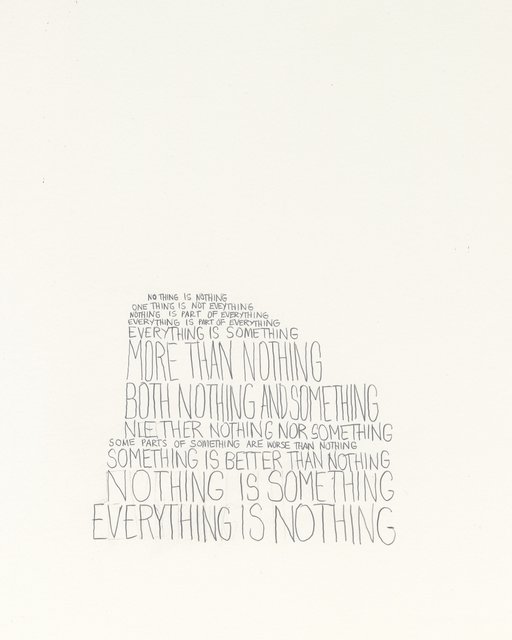 David Byrne,
Bulwark of Logic 2004
is available on Artspace for $750
David Byrne,
Bulwark of Logic 2004
is available on Artspace for $750
AK: Visual art is really important. Since I started my career, it has been very important for me. I’m not good at visual art, but I have ideas in my head and when I am writing music, when I get to the second or third song, I start seeing colors and the color is consistent until I finish the album. What that color is going to turn out to be, I don’t know, but I make sure that color is part of the album and when I started working on Remain in Light , that dark light was there all the time. I couldn’t say it, but I was thinking about a dark light with light in it. I had heard “Once in a Lifetime” in 1983 when I arrived in Paris. In Benin, I didn’t have any music because of the communist regime. From 1972 to 1983 there was no music at all and the world passed me by without me hearing anything new, so when I arrived in Paris I was like a music junkie. Anything new, I was chomping on it. And when I heard “Once in a Lifetime” on a cassette at a friend’s house, there was a guy telling me, “This is rock and roll, this isn’t African music,” and I was like, “I’m sorry, but this is African music.” I was so homesick; it was just three months after I arrived. And that song allowed me to make the link between coming to a different culture and staying here, because I felt like if I can find this kind of music here, there is more for me to discover.
I never linked that song to David. David came to my show at SOBs in 1992 and I didn’t know that album, but I knew every album after that. I was singing the chorus one day and my husband said, “That is David Byrne, the Talking Heads,” and I said, “What, what, what? David Byrne sings that song?” He put the Spotify on and I said, “Play the whole album,” and he said, “All the words are absurd,” and I said, “This is not absurd. If you know African proverbs, this is not absurd; this is as clear as anything my grandmother would tell me.” It would take two days to understand what she was talking about. Right before I started working on Remain in Light I did the album Eve, and I met many different women who sang endless songs to me and I couldn’t use all of them and as soon as I finished I said to my husband, “I want to put call and response with the voices of those women and the Talking Heads. I need that.” It became clear that every song on that album has a message that is completely different from your perspective as an American. As an African, it was a no-brainer that those proverbs had to be a part of the song. That’s how I did all the songs. It’s all the things about how we perceive people before we even think about what the person has to bring to the table.
To continue reading the conversaion, click HERE to visit Cultured Magazine.
RELATED ARTICLES:











